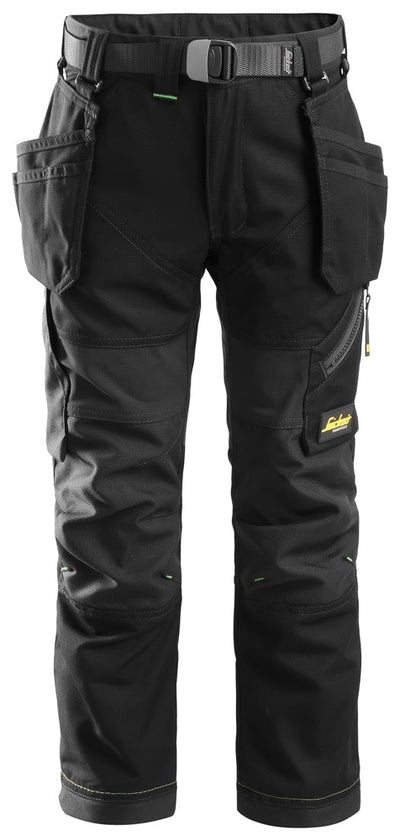What Do Different Colour Hi Vis Mean?
Understanding Hi Vis Colours for Safer Workplaces
If you work in construction, transport, utilities, or any environment where visibility is critical, you already know how important high-visibility (hi vis) gear is. But have you ever wondered what the different colours of hi vis actually mean—and whether it matters which one you wear?
At Tradeworx, we supply hi vis clothing and PPE from top brands like Snickers, Blaklader, and Portwest, designed to meet safety standards across the UK and Ireland. In this post, we’ll explain the differences between hi vis colours and help you choose the right one for your role or site.
The Purpose of Hi Vis Clothing
Hi vis clothing is designed to make the wearer easily visible in low light or high-risk environments, using fluorescent colours and reflective tape. The brighter the colour and the more reflective the material, the more visible you are to others—especially moving vehicles or machinery.
While yellow and orange are the most common hi vis colours, other shades like red or even pink are used in specific roles or industries. The choice of colour is often governed by regulations, company policy, or simply what’s most effective in a given environment.
Yellow Hi Vis – The Industry Standard
Yellow is by far the most widely used hi vis colour, especially in construction, logistics, and roadside maintenance. It offers excellent contrast in most environments, which is why many workplaces default to yellow as the standard.
Take the Snickers High-Vis Women's Stretch Trousers with Holster Pockets – Yellow, for example. These trousers are built for both visibility and comfort, meeting EN ISO 20471 standards while providing flexible protection for active tradeswomen.
Similarly, the Snickers High-Vis Class Full Zip Hoodie – Yellow is ideal for layering in cooler months, with bright fluorescent colour and strategically placed reflective tape to ensure 360-degree visibility.
Orange Hi Vis – Rail, Roads & Utilities
Orange hi vis is often used in the railway and highways sectors, as it provides strong contrast against green countryside or darker urban backdrops. In fact, orange is typically required by law for rail workers in the UK (RIS-3279-TOM standard).
The Portwest DX475 Hi Vis Softshell Jacket – Orange is a popular choice for anyone working in those sectors. It’s lightweight yet durable, fully certified, and designed to keep you safe without sacrificing comfort.
Do Other Colours Mean Anything?
While yellow and orange are the most common for safety compliance, other colours may be used on-site for role identification. For example:
-
Red – Sometimes used for fire marshals or emergency personnel
-
Blue or Green – May indicate a first aider or new staff member
-
Pink – Occasionally used for visibility in snow, or to denote visitors
These colours are not typically compliant for general PPE standards like EN ISO 20471 but may be used in controlled environments for clarity or temporary identification.
Choosing the Right Colour for Your Role
When selecting hi vis workwear, always check with your employer or site manager first. Many companies will have strict policies on what colours are allowed based on your trade, role, or site-specific requirements.
Regardless of the colour, make sure your gear:
-
Meets EN ISO 20471 certification
-
Provides sufficient coverage (Class 1, 2 or 3 depending on risk level)
-
Is clean and well-maintained—dirt can reduce visibility
At Tradeworx, we stock a wide selection of certified yellow and orange hi vis garments, so you’re covered whether you're on a building site, roadside, or rail line.
Final Thoughts
So, what do different colour hi vis mean? In short: yellow and orange are the go-to colours for visibility and compliance, with orange preferred in rail and road sectors. Other colours can have specific meanings in certain environments, but they are rarely PPE compliant unless otherwise specified.
Explore our full hi vis collection to find trousers, jackets, and hoodies that meet the highest safety standards—designed with the needs of real tradespeople in mind.


